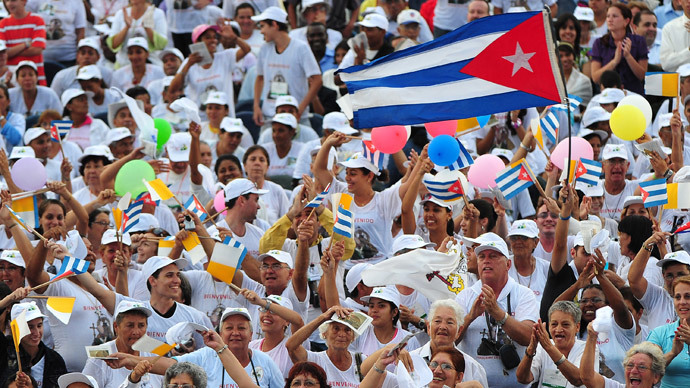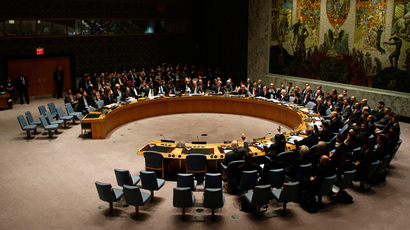Exposed: How US created 'Cuban Twitter' to take down Castro

The United States engineered a text messaging network in Cuba to try and spread unrest in the communist country. More than 40,000 people have shared news and opinions using the service.
The documents obtained by the Associated Press state the project was led by Joe McSpedon, a US government official, who attracted a team of high-tech wizards from around the globe to set up a site that could reach hundreds of thousands of Cubans.
The Caribbean island has some of the world’s most stringent internet regulations, so text messaging via cellphones would help to evade the country’s strict information controls. Since Fidel Castro handed over power to his brother Raul, the use of mobile technology has been encouraged. Cubans were given the opportunity to call one another or send text messages, though the cost was high, given that the average salary is just $20 per month.
The network was called ZunZuneo, which was a play on twitter, with the word being slang for a Cuban hummingbird’s tweet. The project was financed by the US Agency for international development (USAID), best known for overseeing billions of dollars in US humanitarian aid.

The initial plan was to gain users by allowing access to light news stories, such as baseball bulletins, music and weather updates. However, once a critical number of subscribers was reached, operators would introduce political stories aimed at tarnishing the reputation of the Cuban government, with the aim of creating a ‘Cuban Spring’.
Critical mass was important for the USAID because, due to public demand, it would be much harder for the Cuban government to shut it down, while Cubacel, the cell phone company, would have seen a mass increase in their profits.
USAID staff had noted that text messaging had been a popular fuse in starting political uprisings in Moldova and the Philippines. At its peak, the site had more than 40,000 subscribers, who were never aware that the network was created by the US government.
"There will be absolutely no mention of United States government involvement," according to a 2010 memo from Mobile Accord, one of the project's contractors. "This is absolutely crucial for the long-term success of the service and to ensure the success of the mission."
The US government’s actions have already caught the attention of one American politician, senator Patrick Leahy, who is a Democrat from Vermont, who said, “On the face of it there are several aspects about this which are troubling.”
"There is the risk to young, unsuspecting Cuban cellphone users who had no idea this was a US government-funded activity. There is the clandestine nature of the program that was not disclosed to the appropriations subcommittee with oversight responsibility.”
White House Press Secretary Jay Carney responded Thursday, saying the program was completed in 2012, and that it was conducted out in the open, approved by lawmakers, and analyzed by government watchdogs.
“Suggestions that this was a covert program are wrong,” Carney said. “Congress funds democracy programming to Cuba to help empower Cubans to access more information and to strengthen civil society. These appropriations are public, unlike covert action. The money invested has been debated in Congress. In addition, [the Government Accountability Office] reviewed this program in detail in 2013, and found it was conducted in accordance with US law and under appropriate oversight controls.”
Carney added that while it was not a secret program, the government was “discreet” about its operations, as it was conducted in Cuba, a “non-permissive environment.”
“That’s how you protect the practitioners and the public,” he said. “This is not unique to Cuba.”
There are a number of questions regarding the projects legality. US law requires that any covert action by a federal agency must have presidential authorization. Officials at USAID would not say who had approved the program or whether the White House was aware of it. McSpedon, the most senior official named in the documents obtained by the AP, is a mid-level manager and he declined to comment.
To try and hide their tracks, they used a maze of different companies, with a bank account from the Cayman Islands to make sure that no one could ever find out this was an operation set up by the United States.
Although the project had hoped to obtain 400,000 subscribers, they eventually decided to cap the number at 40,000 by the end March 2011, which was less than one percent of the population of Cuba.
Interest was being lost in the project with every month that passed, and, by the summer of 2012, Cubans began to complain that the service was inconsistent, and then one day it just disappeared.
The USAID say that did not have any more money available for the project, while the Cuban government decided not to comment.














